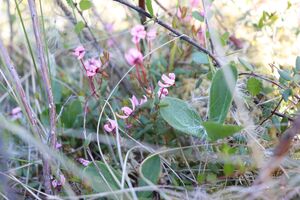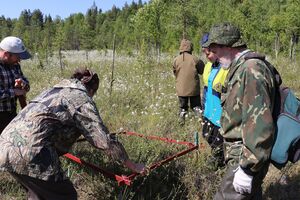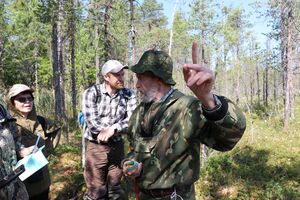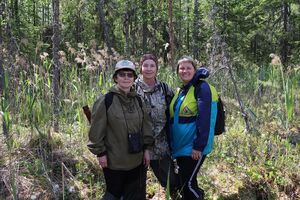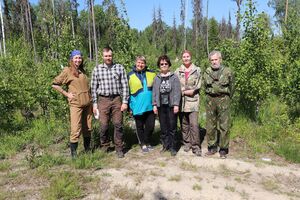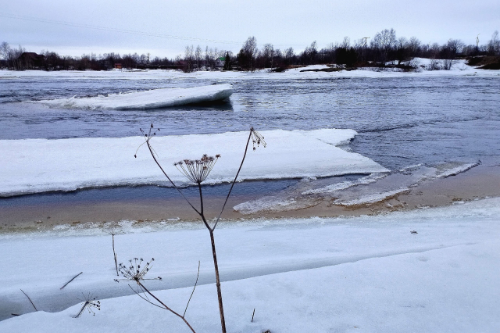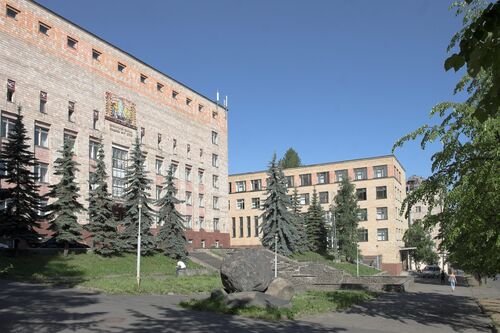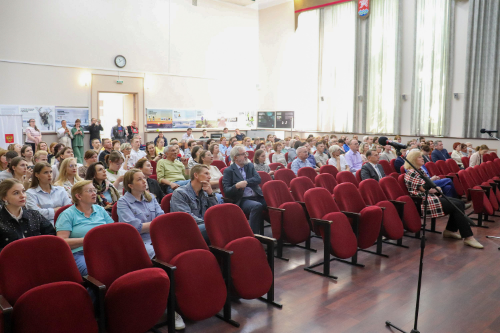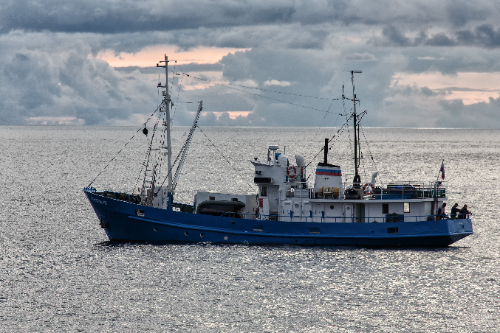On June 20-21, researchers from the Mire Ecosystems Laboratory IB KarRC RAS Vladimir Antipin, Margarita Boichuk, Lyubov Kantserova, Viktor Mironov, and Elena Talbonen made field trips to protected berry-rich mires – Nenazvannoye, Chuvnoi-Suo, and Shogarvi. They are model sites for studying cranberry yield dynamics in southern Karelia. The research is conducted by the laboratory as part of long-term studies of bog cranberry productivity variations under modern climatic conditions. As a result of 14 years of monitoring (2009-2023), scientists have confirmed the fact previously established in resource studies that the weather and habitat conditions have an effect on its productivity.
Every year, at the end of June, during mass flowering in cranberry, scientists conduct a count of the number of flowers. These data are used to evaluate the condition of the berry grounds and predict the berry yield in the fall. Flowers are counted in six permanent and four temporary sample plots, which differ in site conditions for cranberry: water and mineral nutrition, vegetation, etc. The data collected are entered into a database.
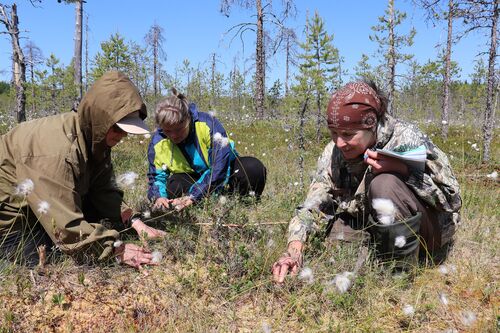
Researchers from the Mire Ecosystems Laboratory IB KarRC RAS Margarita Boichuk, Lyubov Kantserova, and Elena Talbonen taking a census of flowers in Nenazvannoye mire
According to years of observations, average flower productivity of bog cranberry in southern Karelia is 120 flowers/m2. With this number of flowers on can expect a fruit productivity of 60–80 berries/m2, and an estimated yield of 300–320 kg/ha. The results of processing the field samples show that the average number of flowers this year is much lower – 75 flowers/m2. This means the berry yield will be about a third below the average – 180–200 kg/ha. The most favorable year for cranberry within the period covered by studies was the warm and humid season of 2021 – almost 600 kg/ha, and the most unproductive was the hot and extremely dry 2018 – 65 kg/ha.
The decrease in the number of flowers this season is also related to the weather conditions, scientists argue. This inference will be verified by a more accurate analysis of the weather data and the census of ripe berries in the same sample plots in the fall.
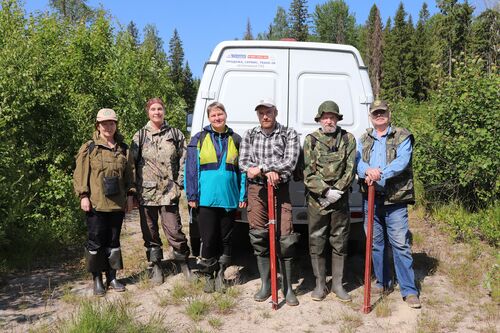
Participants of the June 20th field trip
– Resource studies are an important science field; they provide the nation with knowledge of the state of its resources, including plant resources. Looking at monitoring results, we see that the cranberry yield curve is wavy, and the trend fluctuates widely. On the whole, however, the situation with cranberry yield in Karelia can be called favorable, – summarized Vladimir Antipin, leader of the study.
Photo gallery





